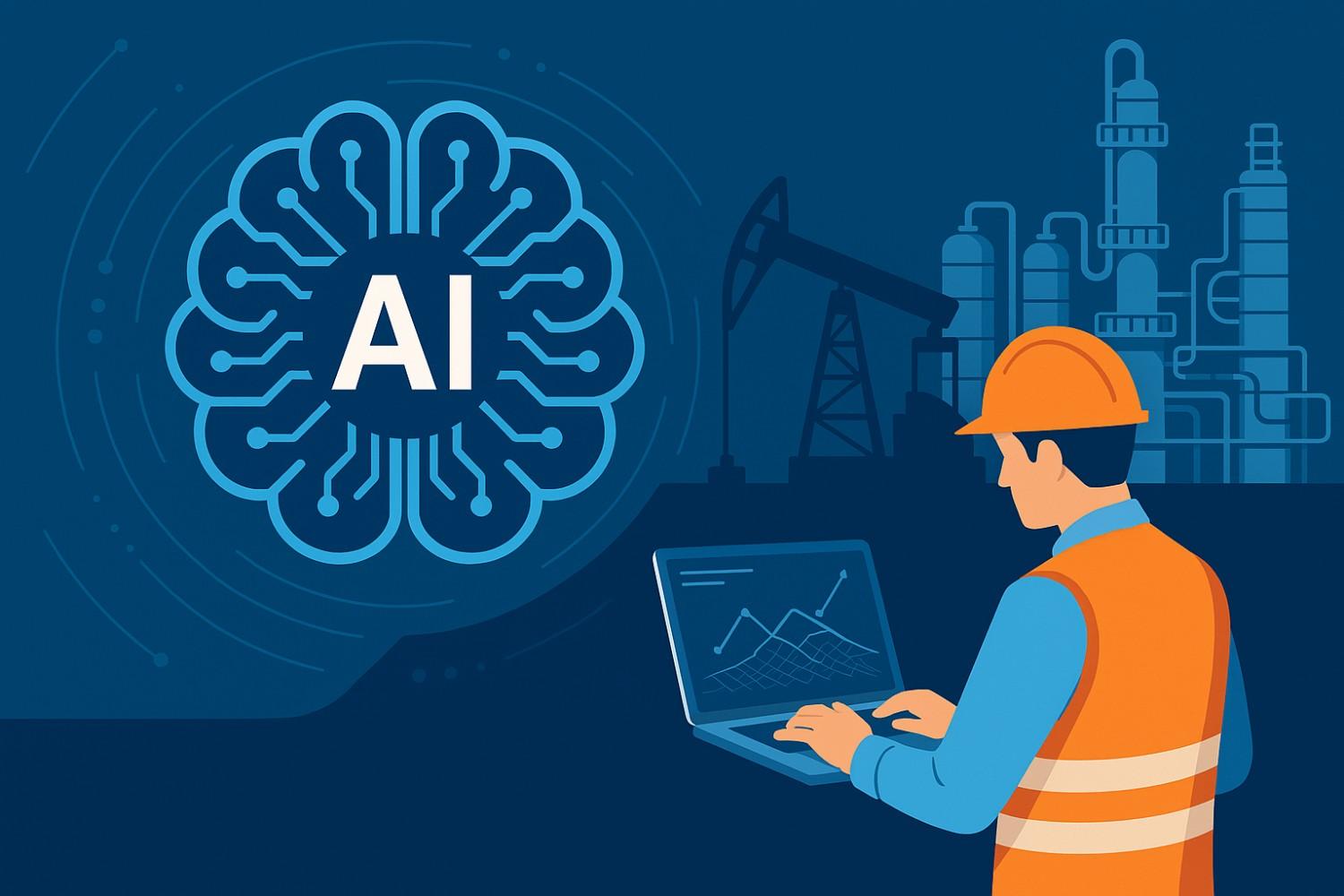Let’s face it. Every leader in the energy and process industries is talking about digital transformation. It’s the key to survival, yet getting it right feels like trying to fix a leaky pipe while sailing a ship. You know you need to modernize your refineries, chemical plants, and power grids, but the obstacles feel massive. This guide cuts through the complexity to give you a clear, human-centered strategy for overcoming those digital transformation challenges and finally seeing a real return on investment.
Common Digital Transformation Challenges in Energy and Process Industries
Why is it so hard to get these projects off the ground? It usually comes down to a few familiar headaches, regardless of your sector:
- Data Overload, Insight Scarcity: You’re collecting millions of data points every day, but that data sits in silos. Separate systems that don’t talk to each other. The result? Great data, zero meaningful advanced analytics in energy sector applications, and decision-making that’s still based on gut feeling.
- Talent Gap: Your veteran engineers know the plant better than anyone, but they might not be fluent in Python or machine learning. Meanwhile, fresh digital talent understands AI but lacks decades of process engineering wisdom.
- The Pilot Project Trap: Many companies launch small, exciting pilot projects only to discover they can’t scale them across the entire operation. They get stuck in “pilot purgatory,” wasting money and goodwill.
- Security Fears: Connecting decades-old operational technology to the internet raises very real concerns about cybersecurity, making everyone hesitant to commit fully.
Suggested Read: How Digital Technologies Are Safeguarding the Energy Transition
Industry Specific Barriers to Digital Transformation
The challenges aren’t one size fits all. The friction points vary significantly:
- Digital Transformation in Oil and Gas: This sector deals with massive, geographically dispersed assets, from offshore platforms to pipelines. The main digital transformation barriers here involve managing data integrity across extreme distances and ensuring that new predictive maintenance tools can operate reliably in harsh, remote environments.
- Digital Transformation in the Chemical Industry: Here, the focus is on highly complex, continuous reaction processes where safety is of paramount importance. The resistance often comes from the fear that changes to operating parameters, even tiny ones recommended by AI, could trigger dangerous instability.
- Digital Transformation in Power Sector: Utilities face the dual pressure of integrating volatile renewable energy sources while maintaining the stability of the aging grid. The barrier is often regulatory red tape, along with the inherent risk aversion that comes with being responsible for keeping the lights on for millions of people.
Strategic Framework to Overcome Barriers
To overcome these hurdles, you need a disciplined and intentional strategy. It’s not about buying the flashiest software; it’s about establishing the right foundation.
- Stop Buying Tools, Start Building Capability: Shift your mindset from a technology purchase to a business transformation initiative. The goal isn’t implementing a new dashboard; it’s enabling your people to make better decisions faster.
- Unite IT and OT: The information technology (IT) team and the operational technology (OT) team must become one unified force. You need IT’s networking expertise applied to OT’s deep process knowledge to ensure data is secure, reliable, and accessible.
- Prioritize the Business Problem: Before you spend a dollar on a new system, ask: What is the single biggest operational headache costing us money right now? This ensures every digital investment directly addresses a measurable business problem.
The Business Case ROI from Digital Transformation
The only thing that silences doubt and unlocks real funding is a clear, compelling ROI from digital transformation. This isn’t just about cutting a few jobs; it’s about generating new, significant value:
- Efficiency Gains: Using machine learning to fine-tune your compressors or furnaces can lead to a 3 percent to 5 percent reduction in energy consumption. In a large refining or chemical operation, that translates into millions saved annually.
- Optimized Production: Digital transformation in the energy industry enables precise, real-time adjustments, pushing your assets to the edge of their safe operating limit for maximum output, maximizing production yield without sacrificing safety.
- Risk Reduction: Predictive maintenance shifts your business from reactive (fixing a broken pump) to proactive (replacing a failing part before it breaks), drastically minimizing unplanned downtime, which is the single biggest expense in these industries. The ROI of digital transformation is directly tied to avoiding catastrophic equipment failures.
Ingenero’s Approach to Digital Transformation
This is where a partner with deep process expertise makes all the difference. At Ingenero, we understand that a digital solution is useless if it doesn’t respect the laws of physics and the constraints of your physical plant.
We don’t just provide digital transformation consulting services; we integrate decades of applied process engineering knowledge with cutting-edge digital tools. Our focus is on the process first, asking what data is needed to solve a specific problem, like exchanger fouling or utility consumption. This approach ensures our digital transformation services provider solutions are technically sound and operationally relevant. We build digital applications like our Ingenero advanced analytics in energy sector platforms that are specifically designed for the unique needs of the digital transformation in the chemical industry and other heavy process sectors, providing real-time, actionable insights that your engineers can trust.
Suggested Read: Digital Transformation in the Utilities and Power Industry
Practical Playbook for Energy Leaders
You need a clear path forward, not a theoretical lecture. Here is a four-step playbook to ensure your digital initiative succeeds:
Step 1: Conduct Assessment and Gap Analysis
Start by understanding your current state. Don’t look at technology; look at people, process, and data.
- People: Who are your digital champions? Where are the knowledge gaps?
- Process: Map a critical workflow, like the maintenance process, and identify where manual, paper-based, or disconnected steps create friction.
- Data: Inventory your operational data. Is it clean? Is it accessible? Can it be trusted? This assessment creates the business case for your digital investment.
Step 2: Design Roadmap (Quick Wins and Long-Term Scaling)
A successful roadmap has two horizons:
- Quick Wins (0 12 Months): Pick a high-pain, low-complexity area where you can deploy a solution quickly. Maybe it’s a simple real-time energy dashboard or a digital safety checklist. These quick wins build momentum, demonstrate value, and secure organizational buy-in.
- Long Term Scaling (15 Years): Focus on enterprise-wide solutions, such as a full implementation of digital twins or advanced analytics in an energy sector platform that predicts asset failure across the entire fleet. This horizon requires serious capital and change management.
Step 3: Partner with the Right Digital Transformation Services Provider
The right partner must speak your language. They need to understand the digital transformation in oil and gas processes, not just the software. Choose a digital transformation consulting services provider like Ingenero that integrates deep domain engineering expertise with cutting-edge digital development. This ensures that the solutions you build are safe, compliant, and actually make sense to the people running the plant every day.
Step 4: Implement Continuous Improvement Using Advanced Analytics
Digital transformation isn’t a destination; it’s a new way of operating. Once the initial solutions are deployed, use advanced analytics in energy sector applications to monitor the impact, identify new opportunities, and feed that information back into the system. This creates a powerful cycle of continuous improvement, where your assets get smarter and more efficient every single day.
Suggested Read: Roadmap to Digitalization in Manufacturing
Conclusion
Overcoming digital transformation barriers requires more than just budget; it requires discipline, focus, and the right expertise. By prioritizing measurable business impact, forging a strong IT and OT alliance, and partnering with domain experts like Ingenero, you can move past the common challenges. The future of the digital transformation in the power sector, chemicals, and oil and gas will be defined by those who successfully translate their physical world knowledge into powerful digital capabilities. This is how you ensure your company not only survives the competitive shifts but thrives in the new era of intelligent industry.




